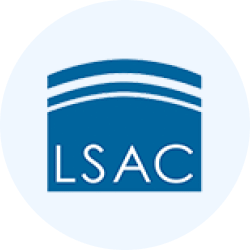Examples: Identify the Conclusion | Logical Reasoning for LSAT PDF Download
Main Conclusion Examples and Practice
The Main Conclusion question type is a particularly important one to master, because identifying the main conclusion is an essential step in solving many other types of questions. We’re now ready for some practice. In the following arguments, the Main Conclusions are identified.
Example 1
A new process enables ordinary table salt to be fortified with iron. This advance could help reduce the high incidence of anemia in the world's population due to a deficiency of iron in the diet. Salt is used as a preservative for food and a flavor enhancer all over the globe, and people consume salt in quantities that would provide iron in significant amounts.
A paraphrase of the argument’s overall takeaway: “Iron-fortified salt could reduce anemia.”
Breakdown of claims:
- A new process enables ordinary table salt to be fortified with iron.
- This advance could help reduce the high incidence of anemia in the world's population due to a deficiency of iron in the diet.
- Salt is used as a preservative for food and a flavor enhancer all over the globe, and
- People consume salt in quantities that would provide iron in significant amounts.
The only statement supported by evidence is Claim 2: the position that iron-fortified salt could reduce the level of anemia caused by iron deficiency. Claim 1 provides background, and Claims 3 and 4 support the conclusion by establishing that salt is widely consumed throughout the world.
Main Conclusion: “[Fortifying table salt with iron] could help reduce the high incidence of anemia in the world's population due to a deficiency of iron in the diet.”
Example 2
Does the position of a car driver's seat have a significant impact on driving safety? It probably does. Driving position affects both comfort and the ability to see the road clearly. A driver who is uncomfortable eventually becomes fatigued, which makes it difficult to concentrate on the road. Likewise, the better the visibility from the driver's seat, the more aware the driver can be of road conditions and other vehicles.
A paraphrase of the takeaway: “The position of a driver’s seat can affect safety.”
Breakdown of claims:
- Does the position of a car driver's seat have a significant impact on driving safety?
- It probably does.
- Driving position affects both comfort and the ability to see the road clearly.
- A driver who is uncomfortable eventually becomes fatigued, and
- Fatigue makes it difficult to concentrate on the road.
- The better the visibility from the driver's seat, the more aware the driver can be of road conditions and other vehicles.
The argument identifies two ways that seat position can affect safety: fatigue and visibility. The first sentence introduces the question, and the second states the argument’s answer: seat position does impact safety. The following sentences explain and justify that claim, acting as support.
Main Conclusion: The position of the driver’s seat probably has a significant impact on driving safety.
Example 3
Economist: Some critics of the media have contended that negative news reports on the state of the economy can actually harm the economy because such reports damage people's confidence in it, and this lack of confidence in turn adversely affects people's willingness to spend money. But studies show that spending trends correlate very closely with people's confidence in their own immediate economic situations. Thus these media critics are mistaken.
Paraphrase of the takeaway: “The critics are wrong.”
Breakdown of claims:
- Some critics of the media have contended that negative news reports on the state of the economy can actually harm the economy because such reports damage people's confidence in it, and
- This lack of confidence in turn adversely affects people's willingness to spend money.
- But studies show that spending trends correlate very closely with people's confidence in their own immediate economic situations.
- Thus these media critics are mistaken.
The conclusion-indicator “thus” identifies the last sentence as the argument’s main conclusion. It’s the only statement supported by evidence but not acting as support for another claim. Claims 1 and 2 express an opposing view, Claim 3 provides a reason to doubt this view, and Claim 4 concludes, based on this objection, that the critics are mistaken.
Main Conclusion: These media critics are mistaken.
|
7 videos|47 docs|3 tests
|
FAQs on Examples: Identify the Conclusion - Logical Reasoning for LSAT
| 1. What is the main purpose of the LSAT exam? |  |
| 2. How is the LSAT structured? |  |
| 3. What skills does the LSAT test, and why are they important? |  |
| 4. How can candidates prepare for the LSAT effectively? |  |
| 5. What is the significance of the LSAT score in the law school admission process? |  |















